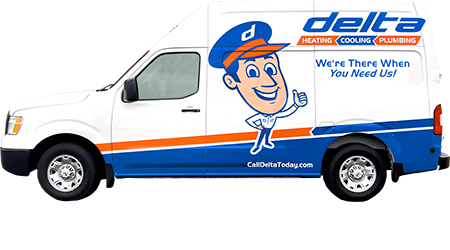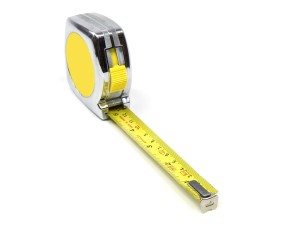When you’re considering a new heating and cooling system—particularly in a place like Wilson, North Carolina, where winter lows can drop into the 20s and summer highs can soar into the 90s—you might be tempted to believe that a bigger system is automatically better. However, installing an HVAC system that’s too large for your home can actually lead to increased costs, decreased efficiency, and less-than-ideal indoor comfort. The real key to achieving consistent, comfortable temperatures is choosing a system that’s correctly sized for your unique needs.
Below, we’ll explore why proper sizing matters for homes in the Wilson area, how professionals determine the right system capacity, and why working with a trusted local contractor like Delta Heating, Cooling & Plumbing can make all the difference in your HVAC investment.
Why Correct HVAC Sizing Matters
1. Avoiding Oversized Systems
A common misconception is that an oversized system will keep your home cooler in the summer and warmer in the winter. In reality, if your unit is too large, it will turn on and off frequently—a process known as short-cycling. This can result in:
- Excessive Wear and Tear: Frequent cycling reduces the lifespan of critical HVAC components.
- Poor Humidity Control: The system won’t run long enough to properly dehumidify the air. In a humid region like Wilson, leftover moisture can lead to an uncomfortable, sticky indoor environment and potential mold growth.
- Higher Utility Bills: Short-cycling is energy-intensive, driving up your monthly heating and cooling costs.
2. Energy Savings
Whether your system is too large or too small, it will work harder than necessary, leading to unnecessary energy expenses. Having your HVAC equipment sized correctly ensures it maintains steady, efficient operation without the constant stop-start cycles that waste energy and strain components.
Standard HVAC Sizing Procedures
ACCA Manual J and Manual S
When selecting a new heating and cooling system for your home, your contractor should rely on established industry guidelines rather than guesswork. The Air Conditioning Contractors of America (ACCA) provides:
- Manual J: A rigorous calculation that considers factors like your home’s insulation levels, duct leakage, window area/orientation, building envelope, and roof color to determine your cooling and heating loads.
- Manual S: Once the load calculations are complete, Manual S specifies how to choose an HVAC system with a capacity that precisely matches your home’s requirements.
If a contractor simply “eyeballs” the size of your system based on square footage alone, it’s a red flag. Always insist on a proper load calculation following these procedures to ensure you don’t end up with inefficient or ineffective equipment.
Important Factors in Load Calculations
1. Insulation and Air Sealing
Some homes in Wilson have been updated with modern insulation and well-sealed ductwork, while others may still have older materials. Any deficiencies—such as gaps in insulation or leaky ducts—can cause conditioned air to escape, forcing your HVAC system to work harder. Your contractor should factor these details into the load calculation and may recommend improvements to help reduce energy loss.
2. Orientation and Architectural Design
A home’s architectural features—including window size and orientation—can significantly affect energy gain or loss. For example, a wall of west-facing windows might introduce more heat in the late afternoon sun, increasing the load on your cooling system. Correct sizing accounts for these nuances, ensuring your system can handle peak conditions.
3. Number of Occupants and Lifestyle
Your day-to-day routines, family size, and personal comfort preferences also play a key role. A contractor should ask questions about:
- The number of people living in the home
- Your typical work or school schedules
- Any special temperature needs (e.g., home offices or baby rooms)
These insights help your HVAC professional tailor a solution that provides optimal comfort during your busiest hours and reduces energy use when the home is empty.
Managing Wilson’s Humidity
According to the U.S. Department of Energy, choosing correctly sized HVAC equipment is especially important in regions with high humidity, such as Eastern North Carolina. Oversized air conditioners can lead to rapid cooling without thorough dehumidification—leaving your home feeling muggy or damp. A properly sized system runs long enough to effectively remove moisture, creating a more comfortable living environment and minimizing the risk of mold or mildew.
Peak-Hour Heat Loss Calculation
Your HVAC contractor should also determine your home’s peak-hour heat loss to ensure your new heating system can keep you warm during the coldest hour of winter. If outdated guidelines are used, you could end up with a system that is larger—and more expensive—than necessary. This can lead to inefficient operation during milder temperatures, increasing your energy bills and reducing overall comfort.
Utilize Smart Technology
Programmable or Smart Thermostats can greatly enhance both your comfort and energy efficiency. These thermostats allow you to set temperature schedules or adjust settings remotely, reducing unnecessary heating or cooling when you’re away. This tech-friendly feature helps prevent the urge to oversize your system; instead, it ensures that every minute of operation is as efficient as possible.
Partner with a Trusted Local Contractor
Investing in a new heating and cooling system in Wilson, NC, is a big decision, so choosing the right HVAC contractor is essential. Seek out a company that:
- Performs Accurate Load Calculations (Manual J): Guarantees correct system sizing for maximum comfort and efficiency.
- Understands the Local Climate: Familiarity with Wilson’s hot, humid summers and chilly winters is crucial for reliable system performance.
- Provides Transparent Pricing: Avoid contractors who push larger, more expensive systems without properly justifying their recommendations.
- Offers Comprehensive Maintenance: Regular system checkups can extend the life of your HVAC equipment and keep it running smoothly.
Delta Heating, Cooling & Plumbing is a family-owned and operated business proudly serving Wilson and the surrounding communities. Our experienced technicians are dedicated to helping you select the perfect HVAC system to suit your home’s unique needs—so you can enjoy year-round comfort without overpaying on energy bills.
Get the Right System for Your Wilson Home
Proper sizing is the cornerstone of HVAC efficiency, performance, and cost-effectiveness. By insisting on precise load calculations, accounting for your home’s specific design, and incorporating smart technology, you can avoid the pitfalls of an oversized or undersized system.
Ready to invest in a new heating and cooling system in Wilson, NC? Delta Heating, Cooling & Plumbing is here to help. Call us at (919) 256-5120 for more information or to schedule an estimate. We look forward to keeping you comfortable in every season, no matter what the Wilson weather brings!

